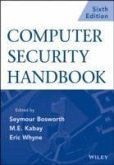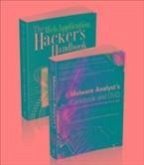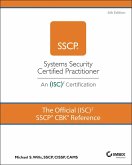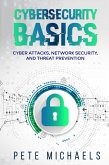Defend your networks and data from attack with this unique two-book security set
The Attack and Defend Computer Security Set is a two-book set comprised of the bestselling second edition of Web Application Hacker's Handbook and Malware Analyst's Cookbook. This special security bundle combines coverage of the two most crucial tactics used to defend networks, applications, and data from attack while giving security professionals insight into the underlying details of these attacks themselves.
The Web Application Hacker's Handbook takes a broad look at web application security and exposes the steps a hacker can take to attack an application, while providing information on how the application can defend itself. Fully updated for the latest security trends and threats, this guide covers remoting frameworks, HTML5, and cross-domain integration techniques along with clickjacking, framebusting, HTTP parameter pollution, XML external entity injection, hybrid file attacks, and more.
The Malware Analyst's Cookbook includes a book and DVD and is designed to enhance the analytical capabilities of anyone who works with malware. Whether you're tracking a Trojan across networks, performing an in-depth binary analysis, or inspecting a machine for potential infections, the recipes in this book will help you go beyond the basic tools for tackling security challenges to cover how to extend your favorite tools or build your own from scratch using C, Python, and Perl source code. The companion DVD features all the files needed to work through the recipes in the book and to complete reverse-engineering challenges along the way.
The Attack and Defend Computer Security Set gives your organization the security tools needed to sound the alarm and stand your ground against malicious threats lurking online.
Hinweis: Dieser Artikel kann nur an eine deutsche Lieferadresse ausgeliefert werden.
The Attack and Defend Computer Security Set is a two-book set comprised of the bestselling second edition of Web Application Hacker's Handbook and Malware Analyst's Cookbook. This special security bundle combines coverage of the two most crucial tactics used to defend networks, applications, and data from attack while giving security professionals insight into the underlying details of these attacks themselves.
The Web Application Hacker's Handbook takes a broad look at web application security and exposes the steps a hacker can take to attack an application, while providing information on how the application can defend itself. Fully updated for the latest security trends and threats, this guide covers remoting frameworks, HTML5, and cross-domain integration techniques along with clickjacking, framebusting, HTTP parameter pollution, XML external entity injection, hybrid file attacks, and more.
The Malware Analyst's Cookbook includes a book and DVD and is designed to enhance the analytical capabilities of anyone who works with malware. Whether you're tracking a Trojan across networks, performing an in-depth binary analysis, or inspecting a machine for potential infections, the recipes in this book will help you go beyond the basic tools for tackling security challenges to cover how to extend your favorite tools or build your own from scratch using C, Python, and Perl source code. The companion DVD features all the files needed to work through the recipes in the book and to complete reverse-engineering challenges along the way.
The Attack and Defend Computer Security Set gives your organization the security tools needed to sound the alarm and stand your ground against malicious threats lurking online.
Dieser Download kann aus rechtlichen Gründen nur mit Rechnungsadresse in D ausgeliefert werden.
Hinweis: Dieser Artikel kann nur an eine deutsche Lieferadresse ausgeliefert werden.









